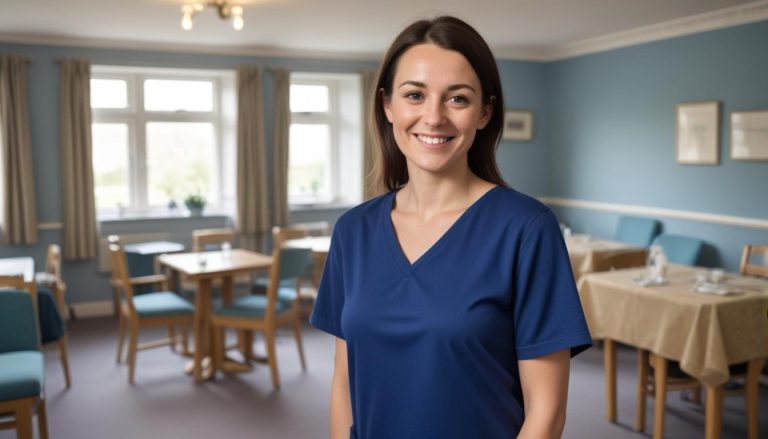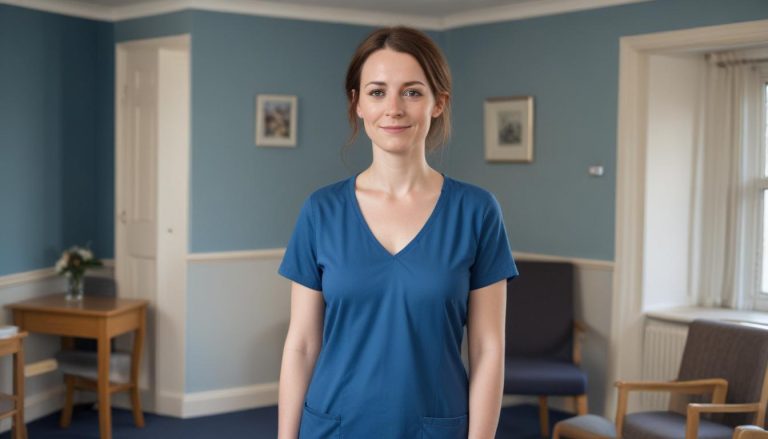This guide will help you answer 1.3 Describe different types of communication technology that can support planning and making journeys safely.
Modern technology supports safer journeys for people receiving care, their families, and care staff. Communication tools help plan trips, stay in touch, access help in emergencies, and provide reassurance. Understanding these technologies benefits everyone involved.
Communication technology means the electronic devices, software, and systems that help people share information quickly and clearly. Some tools are simple and familiar. Others are more advanced or designed for particular needs. Using these tools well can remove barriers and prevent risks during journeys.
Mobile Phones
Mobile phones let carers, clients, and families talk, text, or access the internet wherever there is a signal. Smartphones offer extra tools like maps and emergency apps.
Benefits during journeys include:
- Calling for help quickly if plans change or problems arise.
- Sending updates or reassurance to families.
- Using GPS to navigate routes, avoid traffic, and find the quickest way.
- Accessing care records securely through protected apps.
- Receiving alerts about road or weather issues.
Workers must keep phones charged, take spare batteries for long trips, and store emergency numbers. Phones must be used safely and not distract drivers.
GPS Satellite Navigation
GPS (Global Positioning System) devices, often built into smartphones or cars, provide live directions and location tracking.
They help by:
- Providing clear step-by-step directions for drivers.
- Suggesting route alternatives if traffic, closures, or accidents occur.
- Allowing office staff or family to see where a vehicle is, which is reassuring and helps if support is needed.
- Reducing the risk of becoming lost, which is especially important when transporting vulnerable people.
Some care vehicles use telematics, where staff can track journeys and monitor safe driving.
Journey Management and Scheduling Apps
Digital scheduling tools and journey planners help organise who is travelling, where, and when. Apps like Google Calendar, Microsoft Outlook, or specialist care management software allow teams to:
- Schedule pickups, drop-offs, and routes for multiple people.
- Share changes in plans instantly with all involved.
- Issue reminders or alerts for journeys, including details like medication times or extra support needs.
- Log journeys for record-keeping and to improve future planning.
Some systems include risk assessment tools that flag extra needs for certain people, such as mobility or communication requirements.
Emergency Alert Devices
Many vulnerable travellers carry devices that raise the alarm in an emergency. These include:
- Personal alarms: Small gadgets worn around the neck or wrist. Pressing a button connects directly with a response centre or a nominated carer.
- Fall detectors: These can sense a serious fall and contact help automatically.
- SOS apps: Installed on smartphones, these send location and a pre-written message to emergency contacts at a single touch.
These devices reassure staff, families, and the person travelling. They are vital for those with medical conditions, anxiety, or at risk of becoming lost.
Two-Way Radios
In some care settings—like large residential homes or community teams—two-way radios provide instant voice contact between staff, vehicles, and offices.
Advantages include:
- Reliable connection, even in areas with poor mobile signals.
- Fast group communication for emergencies or late changes.
- No need for phone numbers or contact lists.
They are particularly useful for planned group outings or in busy, complex environments.
Digital Care Records and Cloud-Based Systems
Cloud-based care record systems, accessible through secure laptops, tablets, or smartphones, support journey planning by:
- Displaying up-to-date details about the person’s needs, allergies, medication, and preferences.
- Sharing risk assessments and consent forms that guide safe travel.
- Allowing remote updates—staff can send notes about the journey, such as any incidents or changes in health, straight away.
- Providing a central contact list, so emergency contacts or medical information are always available if needed.
Access to these records must be password protected and follow strict privacy rules.
Translation and Communication Apps
Some people supported by health and social care teams speak little English or have speech, hearing, or cognitive difficulties. Mobile translation or symbol-based communication apps can:
- Translate spoken or written messages into the person’s preferred language.
- Allow users to pick icons or photos to express needs, such as needing a toilet, feeling unwell, or being hungry.
- Provide basic sign language instructions or text-to-speech features.
These tools help break down misunderstandings and improve safety and comfort.
Video Calling and Messaging Platforms
Apps like WhatsApp, Zoom, Skype, or FaceTime mean workers, care recipients, and families can keep in contact visually as well as by text or voice.
These services can:
- Reassure family members that journeys are going safely.
- Enable virtual check-ins with coordinators or health professionals if concerns arise during travel.
- Provide support for people who feel anxious or confused by speaking with a familiar face.
- Help resolve difficulties if something unexpected happens, such as delays or changes in plans.
Some journey-planning apps can also share live updates with families.
Wearable Tracking Devices
Some people at risk during journeys, such as those with dementia, use personal GPS trackers worn as bracelets or fobs.
These devices:
- Let trusted people see the person’s location in real-time using an app.
- Set up safety zones—if the person leaves a set area, alerts are sent.
- Store medical details and emergency contacts, which can be accessed by responders.
This technology helps protect people who may wander, get lost, or be unable to ask for help.
Social Media and Messaging Groups
Closed social media groups (such as private Facebook Messenger or WhatsApp groups) let staff, families, and carers communicate quickly about journeys.
Features include:
- Group messaging for last-minute changes or emergency updates.
- Sharing safe arrival notifications.
- Quick responses to questions or concerns during travel.
These groups must uphold confidentiality. Information should never be posted publicly.
Accessibility-Focused Technology
Some technology ensures communication is suitable for people with additional needs:
- Speech output apps: Read out written messages for people with poor sight.
- Large print or pictorial displays: Help those with low vision or learning disabilities.
- Vibrating alert watches: Discreetly notify people who have hearing loss.
- Accessible journey planners: Apps that show step-free routes, accessible toilets, and detailed stop information.
These tools mean journeys are safe for everyone, regardless of physical or communication barriers.
Final Thoughts
Communication technology makes it easier and safer to plan and carry out health and social care journeys. Staff can access up-to-date records, organise transport, and respond quickly to any problems. People receiving care and their families feel more confident and informed. Technology supports workers to deliver high standards while protecting safety, privacy, and dignity.
Careful choice and use of these technologies, with training for staff and support for those using them, helps prevent mistakes and makes journeys efficient, comfortable, and secure for all involved.
Subscribe to Newsletter
Get the latest news and updates from Care Learning and be first to know about our free courses when they launch.






